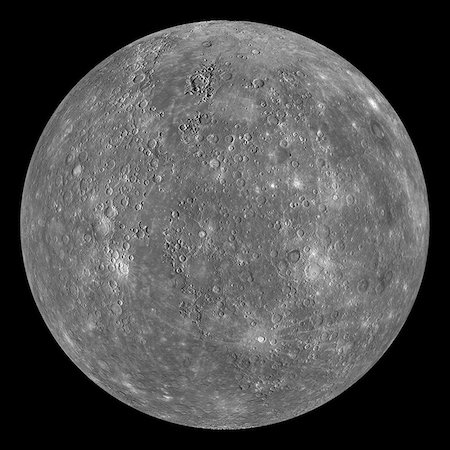A Closer Look at the Planet Mercury
Mercury is the closest planet to our sun, and it’s really hot.
Mercury Travels, A Lot
Mercury’s orbit brings it as close as 43 million kilometers to as far as 70 million kilometers from the sun. At the closest point in its orbit the sun looks three times bigger than it does from Earth. Mercury orbits around the sun in just 88 days, traveling an average of 50 km a second. A day on Mercury lasts about 55 Earth days.
What is it like on Mercury?
Mercury has no atmosphere, however, it does have an exosphere. The exosphere is built of atoms blasted off its surface from solar wind. Mercury looks like Earth’s moon. There isn’t an atmosphere capable of breaking up impactors before they hit the surface. Mercury also has many cliffs and smooth areas, formed as the core was cooling. When the core cools it tends to contract, breaking apart the surface by pulling it in slightly.
Without an atmosphere the surface temperature varies wildly, from -173 Celsius to 472 Celsius. With each day lasting 59 of Earth’s, the side facing the sun is blasted non-stop while the side facing away is left to stay extremely cold and radiate away what’s left of its heat.
Mercury is the second densest planet, after Earth. The gravity on Mercury is a lot lower than Earth. Acceleration due to gravity on Earth is about 9.8 m/s^2 while the acceleration on mercury is only about 3.6 m/s^2. Everything on Mercury would weigh about 1/3 as much as it does on Earth.
Mercury has a magnetic field, although it is very weak. Its strength is only about 1.1% that of Earth’s. It is a global field that is dipolar. Once it may have been as strong, or even stronger than Earth’s. The field most likely weakened as the core cooled and could no longer rotate.
Watching Mercury
It is possible to see Mercury with the naked eye. Mercury was first mentioned by Sumerians, and later recorded by the Babylonians. Mercury even crosses in front of the sun about 13 times a century, which was even watched live by many people over the internet in 2004.
In 1966 Soviet scientists shot radio waves at Mercury to determine if it rotated. They found that the length of its day was equivalent to about 59 of Earth’s.
Later, in 1974, NASA decided to study Mercury and sent the Mariner 10 spacecraft there. Mariner 10 made a total of three flybys. The goal was to measure the magnetic field, take pictures, and to test if it had an atmosphere.
Finally the messenger probe was launched august 3rd 2004, attaining orbit on march 18th, 2011. Messenger helped make many important discoveries. One of the most important is that many volatile elements exist on Mercury, including: Potassium, sulfur, sodium, and chlorine. Another important discovery is that Mercury has ice. This ice exists on the poles, and only in the shadows. This can happen because Mercury has no atmosphere to regulate temperature, so it’s a lot cooler in the shadows. A good thing about poles is that some spots are always in shadow, allowing water deposited there to freeze and stay there.
Want to learn more about space? Upvote, comment and subscribe.


Cool thank for sharing . I think most people would be surprised to hear there is ice on Mercury given how close it is to the sun!
https://twitter.com/Soul_Eater_43/status/823308568384438272
That's why an atmosphere matters. It helps regulating the temperature.
Yes for sure.
Yeah, its definitely not what you would expect.
Thanks for sharing the post!
NP:)
Interesting read :)
Thanks!
Your welcome :)
Really nice post on Mercury, I didn't know about the exosphere!
major space nut. upvote and following great post
It's great to read about our neighbouring planets.
The transit of Mercury would be great to witness. Venus' transit was a great opportunity to hold that planet's shadow in my hand a few years ago.
I have yet to witness the transit of Mercury as it wasn't visible from Australia last year. The next one is due November 11th 2019 and I don't think it will be visible from down here then either.
I'm not sure if it's possible to capture Mercury's shadow in the same way, but I'd love to give it a go.
Thank you for sharing.
Great post, as always!
interesting ! I always love to read about our planets especially mercury